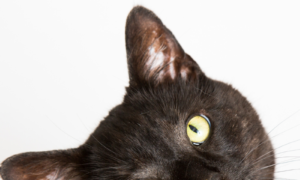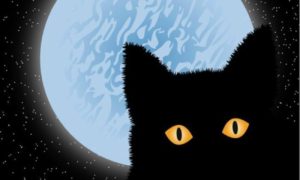 When it comes to cat facts, one fact we know is cats are covered with hairs of varying lengths, colors and textures. Some cats only appear to not have hair. But, how much do we really know about cat hair?
When it comes to cat facts, one fact we know is cats are covered with hairs of varying lengths, colors and textures. Some cats only appear to not have hair. But, how much do we really know about cat hair?
According to The Cornell Book Of Cats, edited by Mordecai Siegal, each hair is made of, “long, slender filaments made of lifeless keratin” consisting of a shaft and a root. The root of each hair is contained in a sac or follicle” with the base of the root that expands into a hair bulb that sits below the dermis (a layer of tissue that supports the epidermis – the outer layer of skin). What we see is the shaft – the exposed part of the hair.
Each hair has three layers with many rows of cells that are flat from top to bottom, with more cells at the bottom than the top. There are air spaces and cellular cavities, as well as spindle-shaped, horny tissue with long axises along the hair shaft that contain cells with melanin (pigment) that gives each hair its color. On top of that is the outer cuticle that has flat, horny cells arranged like slates upon a roof, with each free edge facing the tip of the hair.
Cats have sweat glands attached to each hair follicle that secrete a thick, semifluid substance that covers each hair, giving it its shine.
Lastly, there are muscles called Arrector pili that are attached to the hair follicles. These muscles are the ones that, when they contract, cause a cat’s hair to stand up. More about them later.
Of course, we don’t see all this going on; we see our cats’ lovely coat, and we see their hair all over our belongings.
Have you ever taken a good look at a cat’s hair after they’ve had a good combing? It’s made up of three types of hair, each with its own texture and role to play. Check out these cat facts:
- Coarse, straight, thick guard hairs (also called primary hairs) that taper to a fine tip insulate a cat’s body, protect the skin and assist their sense of touch.
- Medium-sized awn hairs also insulate and protect a cat’s body, yet they’re thinner than the guard hairs.
- The secondary hairs are located in the undercoat. These crimped or rippled-appearing hairs are the thinnest in a cat’s coat. They help regulate body temperature and prevent too much loss of body heat. Secondary hairs are more numerous than guard and awn hairs.
Back to the Arrector pili muscles – not only do they cause a cat’s hair to stand up, they’re also responsible for stress-related shedding, such as during veterinarian visit. What’s lost are telogen hairs (in the resting phase of their growth cycle). So, what some might consider a never-ending battle against cat hair is really just a natural processes of renewal.
Here’s some cat hair trivia:
- The average daily growth of guard hairs is 0.011 inches and 0.010 inches for the secondary hairs.
- Whiskers are actually specialized, thick, stiff tactile hairs.
- About 30% of guard hairs and about 50% of secondary hairs are in a resting phase during the summer. The percentages increase to 75 and 90, respectively, during the winter.
- Outdoor cats exposed to natural sunlight shed the most in spring and fall, whereas indoor cats shed all year long.






